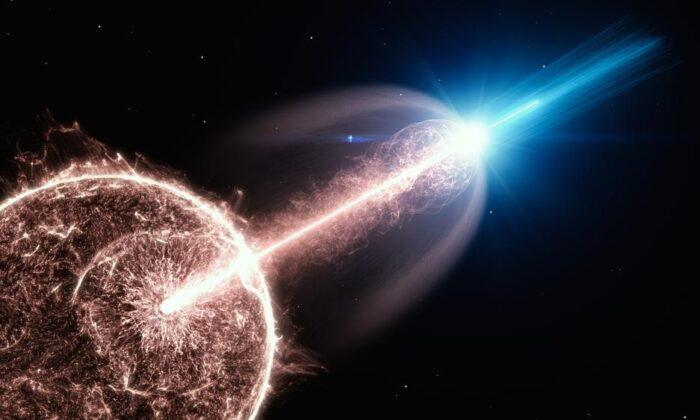Astronomers researched a planetary system only 35 light-years away that contains rocky exoplanets, and they found that it may have a planet in the habitable zone, the area around a star where conditions are suitable for liquid water to exist.
Using the European Southern Observatory’s Very Large Telescope in Chile, a team of astronomers studied the planets around the nearby star L 98-59, which has planets resembling those in the inner solar system.
“The planet in the habitable zone may have an atmosphere that could protect and support life,” María Rosa Zapatero Osorio, an astronomer at the Centre for Astrobiology in Madrid, Spain, and one of the authors of the study, said in the statement.
The new findings mark a milestone in scientists’ quest to find life on other planets.
The findings include a technical breakthrough, since the team used the radial velocity method to discover the small mass of the innermost planet in the system.
This method measures the tiny gravitational pull of an orbiting planet on the host star. Based on how much the star moves, astronomers can estimate the exoplanet’s mass.
Then, given the mass and size of the exoplanet, scientists can calculate its density, which helps determine its composition: Denser ones are likely rocky, while fluffier ones are gaseous.
“If we want to know what a planet is made of, the minimum that we need is its mass and its radius,” explained Olivier Demangeon, a researcher at the Instituto de Astrofísica e Ciências do Espaço, University of Porto in Portugal, and lead author of the study, in the statement.
The above-described type of measurement, however, is very hard to achieve. The team made use of the Echelle SPectrograph for Rocky Exoplanets and Stable Spectroscopic Observations (ESPRESSO) instrument on board the Very Large Telescope.
“Without the precision and stability provided by ESPRESSO this measurement would have not been possible,” Osorio said in the statement. “This is a step forward in our ability to measure the masses of the smallest planets beyond the Solar System.”
The detection of biosignatures on exoplanets relies on the study of the planets’ atmospheres, but today’s telescopes are not powerful enough to achieve this with small rocky planets. According to the statement, the L 98-59 planetary system is a potential target for future studies of exoplanets’ atmospheres.
Based on the data analyses, the team inferred that three of the planets in this system may contain water. The two planets closest to the central star may have small amounts of water, while the third planet’s mass could be up to 30 percent water.
Hidden exoplanets not previously found may exist in this planetary system. The team discovered a fourth planet and even suspect there is a fifth planet in the zone where liquid water may exist on its surface.
“We have hints of the presence of a terrestrial planet in the habitable zone of this system,” Demangeon said in the statement.
The fifth exoplanet, if confirmed, may have a mass of 2.46 Earth mass, with an orbital period of about 23 days. Although this is quite close to the host star, since L 98-59 is a red dwarf, which is much cooler than the sun, this distance is perfect for creating temperatures similar to Earth’s.
“This system announces what is to come,” added Demangeon. “We, as a society, have been chasing terrestrial planets since the birth of astronomy and now we are finally getting closer and closer to the detection of a terrestrial planet in the habitable zone of its star, of which we could study the atmosphere.”




